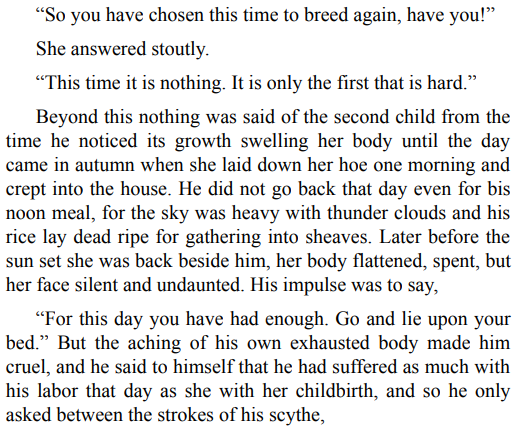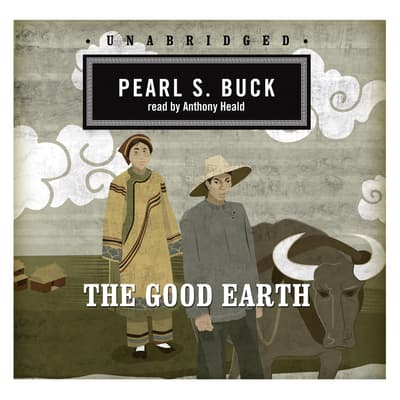


She tells Wang Lung that the Hwangs face financial difficulties. She delivers a boy, and O-lan presents their son to the House of Hwang, where she lived for 10 years as an enslaved woman. Although pregnant, she works beside Wang Lung until the birth.

When she finishes her housework, she joins Wang Lung in the fields. While Wang Lung doesn’t find O-lan attractive, she’s the perfect wife in other respects: deferential, hard-working, loyal, and clever. After everyone leaves, he takes her to his bed. While he serves the meal she prepares, he makes her wait outside with the ox. The newlyweds walk silently to the farm, where Wang Lung tells his bride to prepare a feast for his friends and relatives. Mistress Hwang has arranged the marriage, selling one of her kitchen maids, O-lan, to Wang Lung’s father. On his wedding day, 20-year-old Wang Lung leaves the small farm where he lives with his widowed father and walks to the nearby village to meet his bride for the first time. In addition, the book refers to cannibalism during a famine and an instance of infanticide. This guide refers to the 2016 Simon and Schuster paperback edition.Ĭontent Warning: Throughout The Good Earth there are numerous references to opium use and frequent references to sexual abuse. Buck received the Nobel Prize for literature in 1938, largely because of The Good Earth trilogy. The first of a trilogy, the book received a Pulitzer Prize in 1932 and was the bestselling novel in the US in 1931 (the year of its initial publication) and 1932. Growing up in China in the 1890s as the child of Christian missionaries, Buck watched many of the changes she writes about firsthand.


 0 kommentar(er)
0 kommentar(er)
